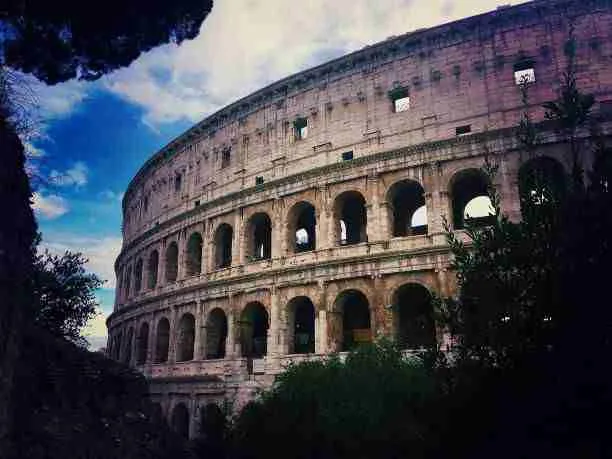'The Ghosts of Rome' brings Joseph O’Connor’s wartime storytelling to life
The Ghosts of Rome continues Joseph O’Connor’s Escape Line Trilogy, blending historical fiction with moral reckoning in Nazi-occupied Italy.
 |
| Photo by Andrei Timofte |
By Novanka Laras and Adelina Indah
The Ghosts of Rome, by Joseph O’Connor
Joseph O’Connor, the celebrated Irish novelist behind Star of the Sea and Redemption Falls, has long mastered the art of blending history with gripping storytelling. His works are known for their intricate narratives, often interwoven with letters, diaries, interviews, and newspaper reports. This collage-like structure brings historical events to life, making them not only immersive but also profoundly readable.
That same masterful approach defines O’Connor’s latest installment in the Escape Line Trilogy, The Ghosts of Rome, set against the perilous backdrop of Nazi-occupied Italy. While My Father’s House introduced readers to the real-life exploits of Monsignor Hugh O’Flaherty, an Irish priest who led a resistance network from within the Vatican, The Ghosts of Rome shifts focus to a fictional yet equally compelling character: Contessa Giovanna Landini.
Landini is not just another figure in the resistance; she is a mastermind. A sophisticated widow, she plays the dual role of nurturing mother figure and strategic leader of the Choir, a Vatican-based resistance group that operates under the cover of choir practice. Beneath the facade of music rehearsals, they exchange coded messages, coordinate escape routes, and plan daring missions known as Rendimenti—a series of covert operations to smuggle escaped Allied prisoners of war to safety.
Rome, under the ever-tightening grip of the Nazi regime, is a city filled with danger. The Gestapo, led by the menacing Paul Hauptmann, has become ruthlessly efficient in its efforts to dismantle the resistance. Hauptmann, modeled after the historical Gestapo officer Herbert Kappler, is both a formidable antagonist and a man under immense pressure. His family has been taken to Germany, their survival contingent on his ability to suppress the Vatican’s underground efforts. His desperation fuels a relentless pursuit of Landini, even leading him to seize her palazzo as his private residence.
A chorus of voices in wartime Rome
What sets The Ghosts of Rome apart from conventional wartime thrillers is O’Connor’s ability to construct a multi-layered world through diverse perspectives. He weaves together present-tense narratives with historical documents, Gestapo reports, personal memoirs, and intercepted communications, creating a vivid and immersive reading experience.
The novel introduces a dynamic cast of characters, each adding their voice to the unfolding drama. Among them is Delia Murphy-Kiernan, the outspoken and hard-drinking wife of the Irish ambassador; Enzo Angelucci, a cunning member of the Roman underworld with a knack for survival; Sir Frank D’Arcy Osborne, a British diplomat navigating the perils of war; and John May, a Cockney jazz musician whose fate becomes entangled with the resistance. One of the most gripping subplots follows Bruno, a Polish airman on the run, evading Nazi patrols in a hostile and unforgiving city.
This mosaic of voices allows O’Connor to explore the complexity of resistance and survival. Every character brings a unique perspective, shedding light on the different ways people resist oppression—whether through direct action, subterfuge, or even reluctant complicity. The city itself becomes a battleground not just of arms, but of ideology, memory, and endurance.
Joseph O’Connor’s place in historical fiction
O’Connor’s literary reputation often draws comparisons to Ireland’s modernist greats, thanks to his lyrical and voice-driven prose. However, The Ghosts of Rome aligns him with a broader European tradition—one deeply concerned with the moral reckonings of World War II. His narrative approach recalls works that grapple with the weight of history, memory, and the ambiguities of human behavior under duress.
At the same time, O’Connor avoids the well-worn clichés of wartime fiction. Rome is not just a backdrop for heroics; it is a city in flux, where the sacred and profane exist side by side. The ruins of its ancient past serve as a reminder of resilience, while its occupied present forces its inhabitants to confront their limits. The novel doesn’t merely recount acts of resistance—it meditates on what it means to resist, to remember, and to endure.
By giving voice to multiple perspectives, O’Connor resists a single, definitive narrative. Instead, he presents history as it often is—messy, fragmented, and shaped by those who live through it. The Ghosts of Rome is more than a thriller; it is an exploration of how war shapes individuals and how individuals, in turn, shape history.
A wartime thriller with depth and resonance
As The Ghosts of Rome races toward its climax, the tension is palpable. Missions grow riskier, allies face betrayal, and Hauptmann’s grip tightens. The final act is both suspenseful and thought-provoking, staying true to O’Connor’s ability to balance plot-driven momentum with deeper philosophical questions.
Can resistance ever truly be organized in the face of overwhelming tyranny? How do personal choices shape the larger arc of history? And in the aftermath of war, what stories will be remembered, and which will be lost to time?
Though it is the second novel in the Escape Line Trilogy, The Ghosts of Rome stands on its own as a powerful work of historical fiction. Readers new to O’Connor’s work will find themselves drawn into his richly textured world, while returning fans will appreciate the expansion of themes introduced in My Father’s House.
The legacy of The Ghosts of Rome
With The Ghosts of Rome, Joseph O’Connor cements his place as a master of historical fiction. His ability to blend meticulous research with compelling storytelling results in a novel that is both gripping and deeply moving.
At its heart, The Ghosts of Rome is about the choices people make in times of crisis. It reminds us that even in the darkest moments, there are those who risk everything for the sake of others. In a city of ghosts—of fallen heroes, lost loves, and shattered dreams—what endures is the human spirit, defiant and unyielding.
